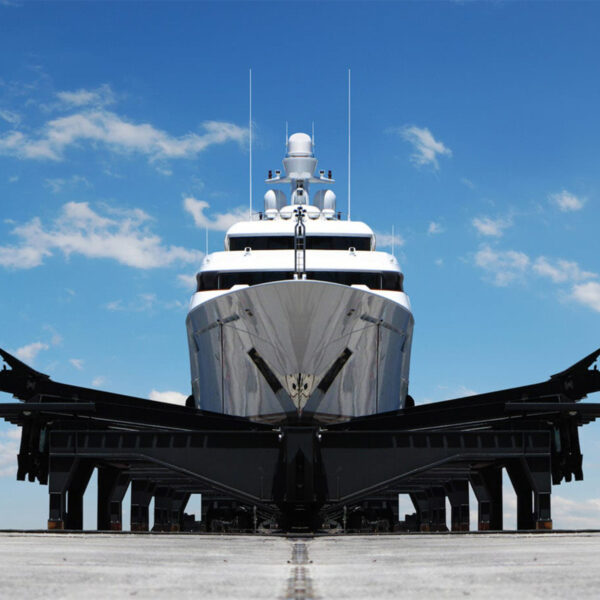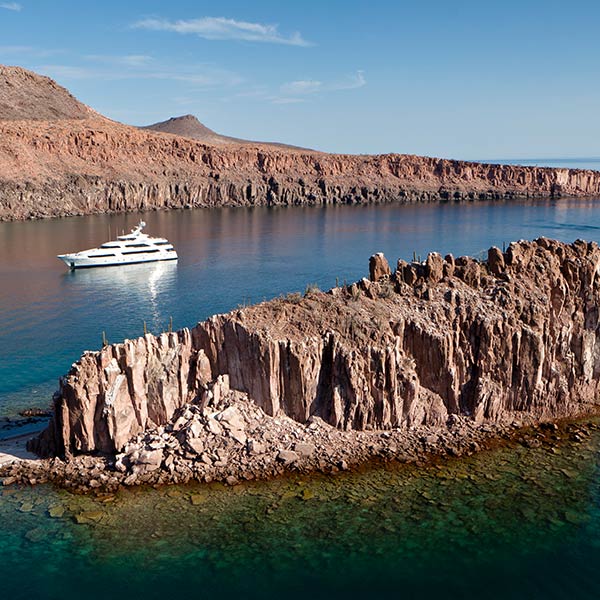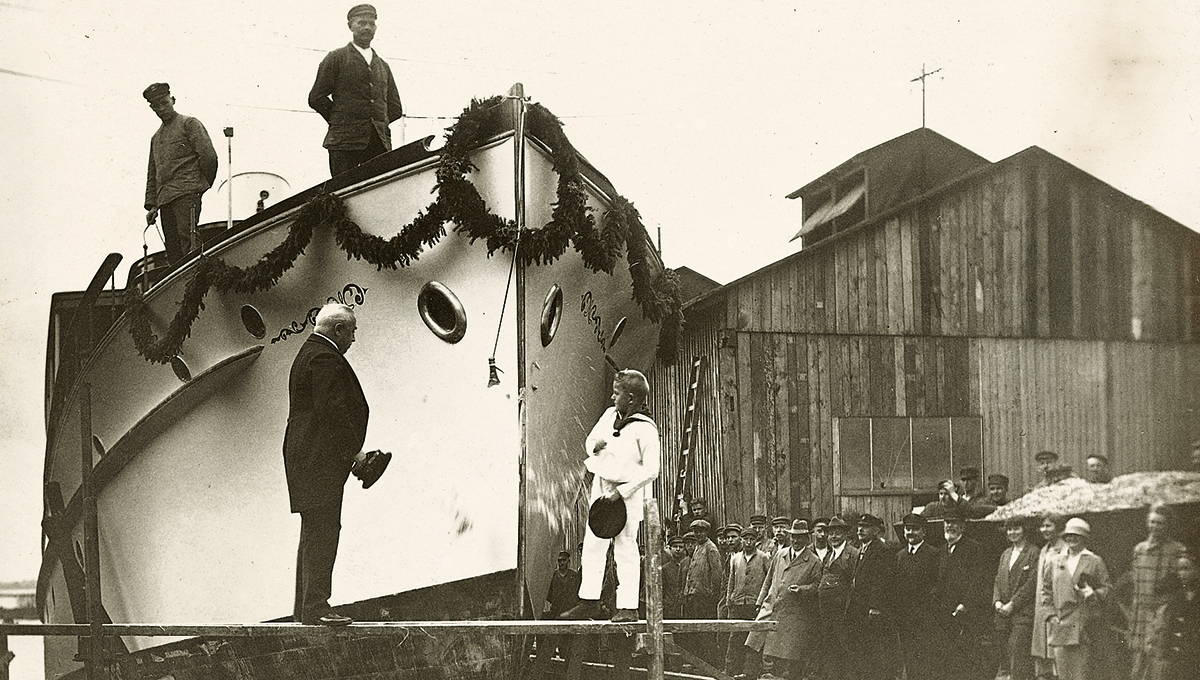
Lürssen Yachts

Lürssen Yachts
Riding the Hanseatic wave
How the German city of Bremen became a centre for shipbuilding excellence.
Bremen is a city in northwest Germany best known for a diverse range of reasons. It is the setting for the Brothers Grimm fairy tale Town Musicians of Bremen, for which there is a commemorative statue located in front of the city hall. It is also the home of Beck’s Brewery, whose logo – a red shield with a white key – symbolises the key to the kingdom of heaven belonging to St Peter, the patron saint of Bremen Cathedral. And then there’s the idyllic Schnoor quarter, whose winding lanes packed with medieval architecture, cultural attractions and destination boutiques rank among the most beautiful streets in the world.
But perhaps most of all, Bremen, a two-city-state that straddles the Weser River, is recognised for its historic role in maritime trade. The Weser is the longest river flowing entirely in Germany lying some 60km upstream from its mouth into the North Sea. It played a critical role in the city’s emergence as a Hanseatic state in the Middle Ages, a fact that was confirmed in 1962 with the rare discovery of the ‘Bremen cog’ during dredging work in the river. Built in 1380, the wooden cog – a cargo ship from the Hanseatic era – is the best preserved medieval merchant ship in the world. After 40 years of painstaking salvage, the 600-year-old shipwreck, now housed in Bremerhaven’s newly founded German Maritime Museum, opened to the public in 2017.
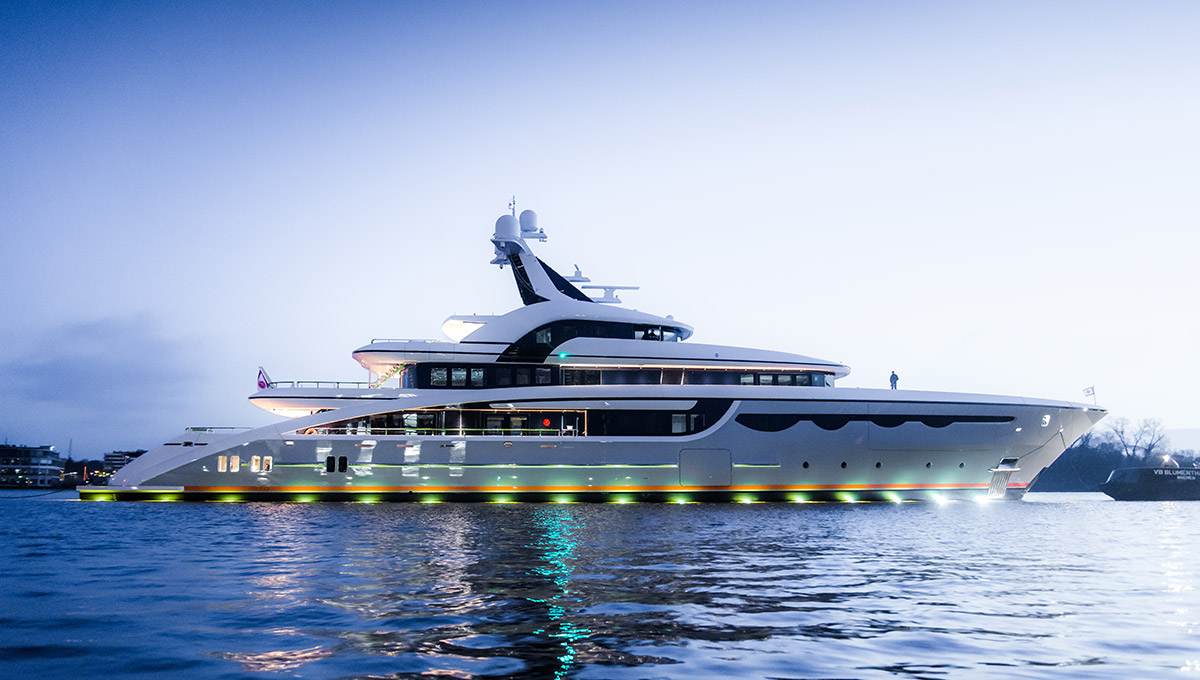
Soaring

Soaring
Today, the City of Bremen is a prime cultural and economic hub. “Bremen is the second largest port of Germany and thus has become an important German shipbuilding region,” says Sylke auf dem Graben, PR and marketing manager at Lürssen shipyard. Housing 1,300 companies and at least 40,000 employees, the port’s maritime economy is central to Bremen’s success.
But Bremen’s industrial triumphs do not overshadow its aesthetic qualities, and the city centre is deemed to be one of the most exquisitely preserved historical neighbourhoods in the country. In 2004, Bremen City Hall, an important example of Brick Gothic and Weser Renaissance architecture in Europe, was added to the list of UNESCO World Heritage Sites, along with the Roland statue, a symbol of freedom of trade. The area’s significant seafaring traditions are echoed in a collection of large model ships housed in the Town Hall, while the region’s historic reputation for producing craft guilds is mirrored in the artisanal skills found within its thriving shipbuilding sector.
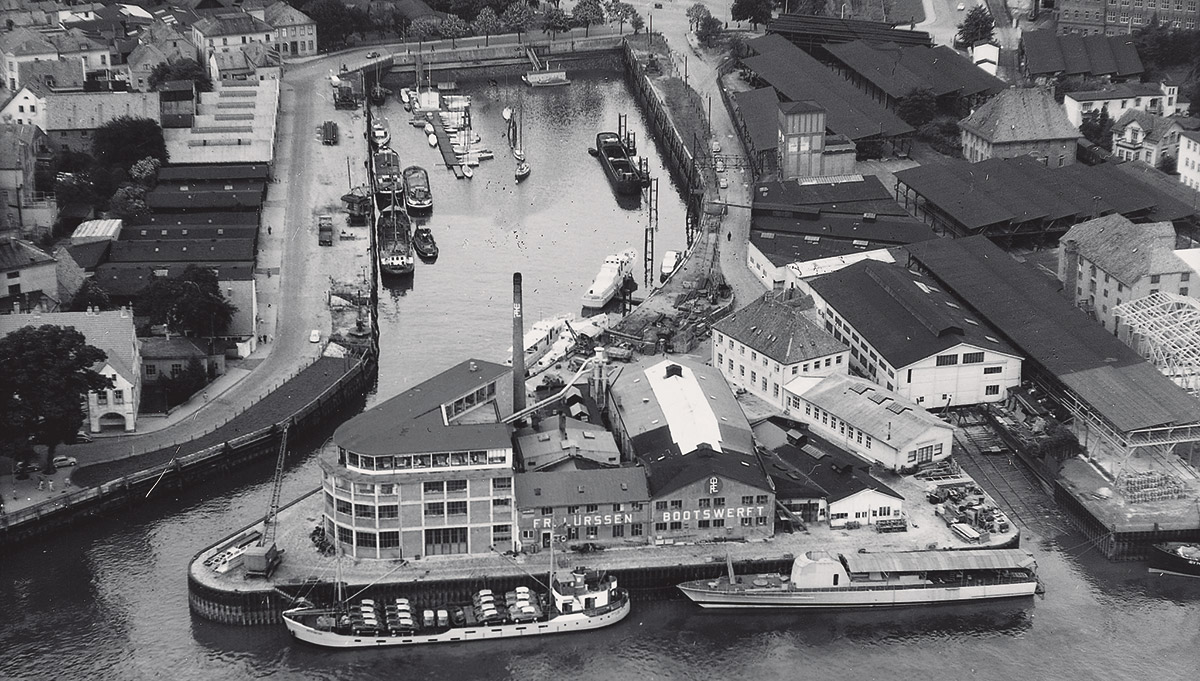
Lürssen Yachts

Lürssen Yachts
Lürssen and Abeking & Rasmussen are two of the superyacht industry’s most prominent shipyards, renowned for building some of the largest and best known superyachts of all time. The behemoths neighbour one another in Lemwerder, sitting adjacent on the left bank of the Weser. Established in 1875, Lürssen’s family-run enterprise started out building racing rowboats for Bremen oarsmen. The lightweight boats quickly became known for their precise workmanship and outstanding quality, which led to the 1886 commission by engine manufacturer Gottlieb Daimler to build the world’s first motorboat, the 6m REMS.
Fast forward 130 years and both Lürssen and Daimler – one of the most successful automotive companies in the world – remain central to Bremen’s success. In 1978, the first Mercedes-Benz passenger car left Daimler’s assembly line in Bremen, and today, Bremerhaven imports and exports more cars than any other city in Europe.
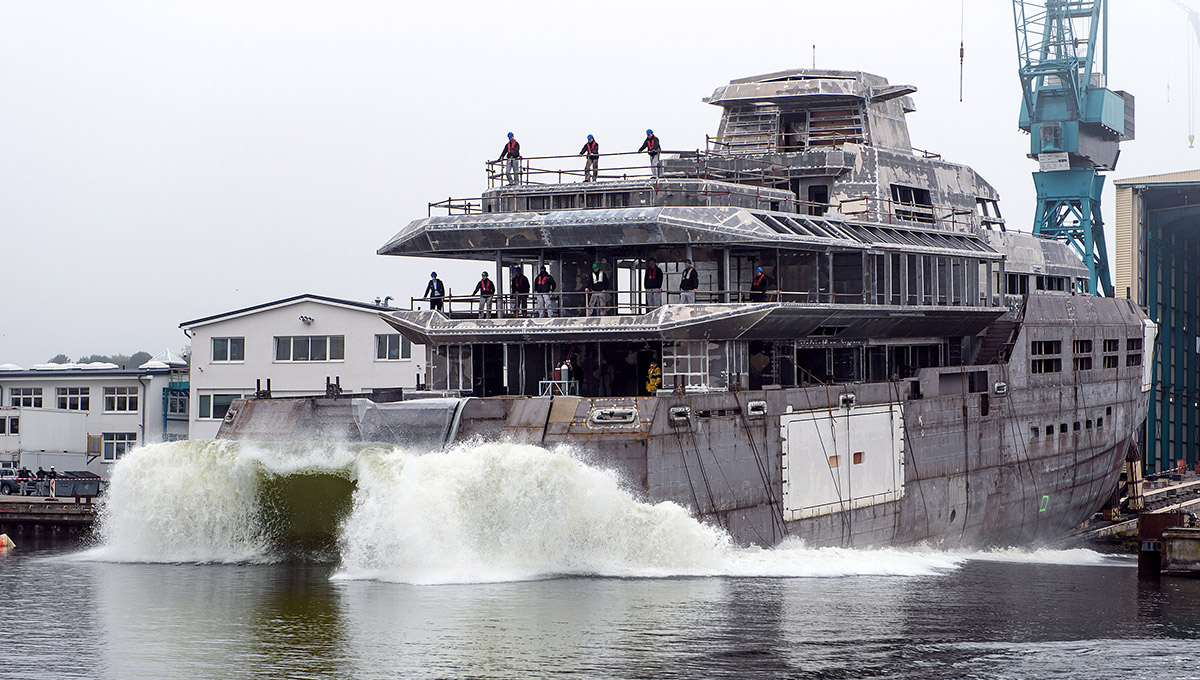
Lürssen Yachts

Lürssen Yachts
Lürssen’s legacy includes nine facilities spread across Bremen, Rendsburg and Hamburg. Dock 10 at the previous Blohm+Voss shipyard in Hamburg is currently being converted into Europe’s largest covered floating dock, but Lürssen’s headquarters lie in Bremen Vegesack, employing more than 1,000 people in the city, and “very much relying on local suppliers,” says Auf dem Graben.
“Approximately 75% of our suppliers are German companies and out of those around 90% are located in Northern Germany, in the regions of our shipyards,” she adds.
Lürssen Bremen features the full spectrum of construction, production and assembly facilities for superyachts greater than 100m in length. It is here that the most ambitious and creative concepts become a reality. These include Lürssen‘s first delivery in 2021, the striking 142m Project Opus, and the world’s largest superyacht, 180m Azzam.
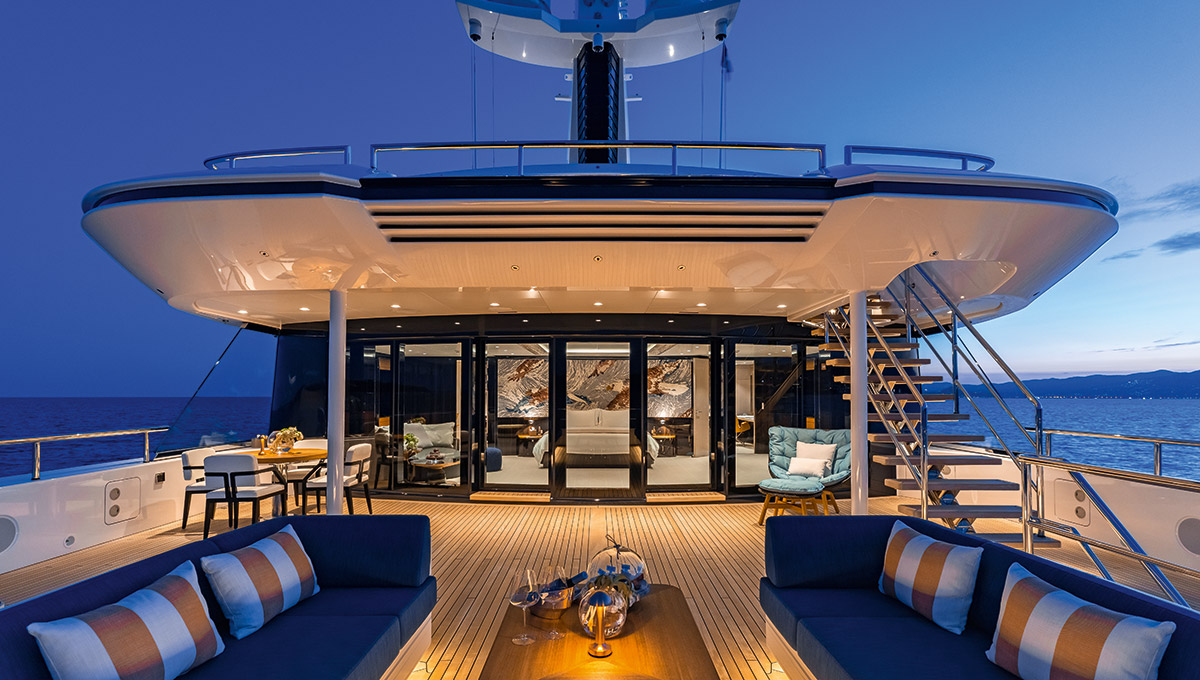
Soaring

Soaring
“We are permanently investing in the yards’ infrastructure,” says Michael Breman, Lürssen’s sales director, “to ensure that we are well positioned for the future, and that we work even more efficiently and sustainably.”
Abeking & Rasmussen was founded in 1907 by George Abeking and Henry Rasmussen, the latter being a talented yacht skipper who proved to be equally adept as a yacht designer. In 2020 the shipyard, which has delivered more than 6,500 vessels in its history, comprises five production halls built for ships up to 125m in length. It is best known for its superyachts and commercial vessels, including 75m Cloudbreak, 80m Excellence, and its latest launch, 68m Soaring, with interior and exterior designed by Bremen-based studio FOCUS Yacht Design.
“The shipyard works like clockwork and the opportunity to work on both design spheres allows an integrated and holistic approach,” says Thomas Mühe, managing director of FOCUS Yacht Design. “As a result, the yacht turned out to be both modern and timeless.”
And Bremen has turned out to be a centre for excellence.

